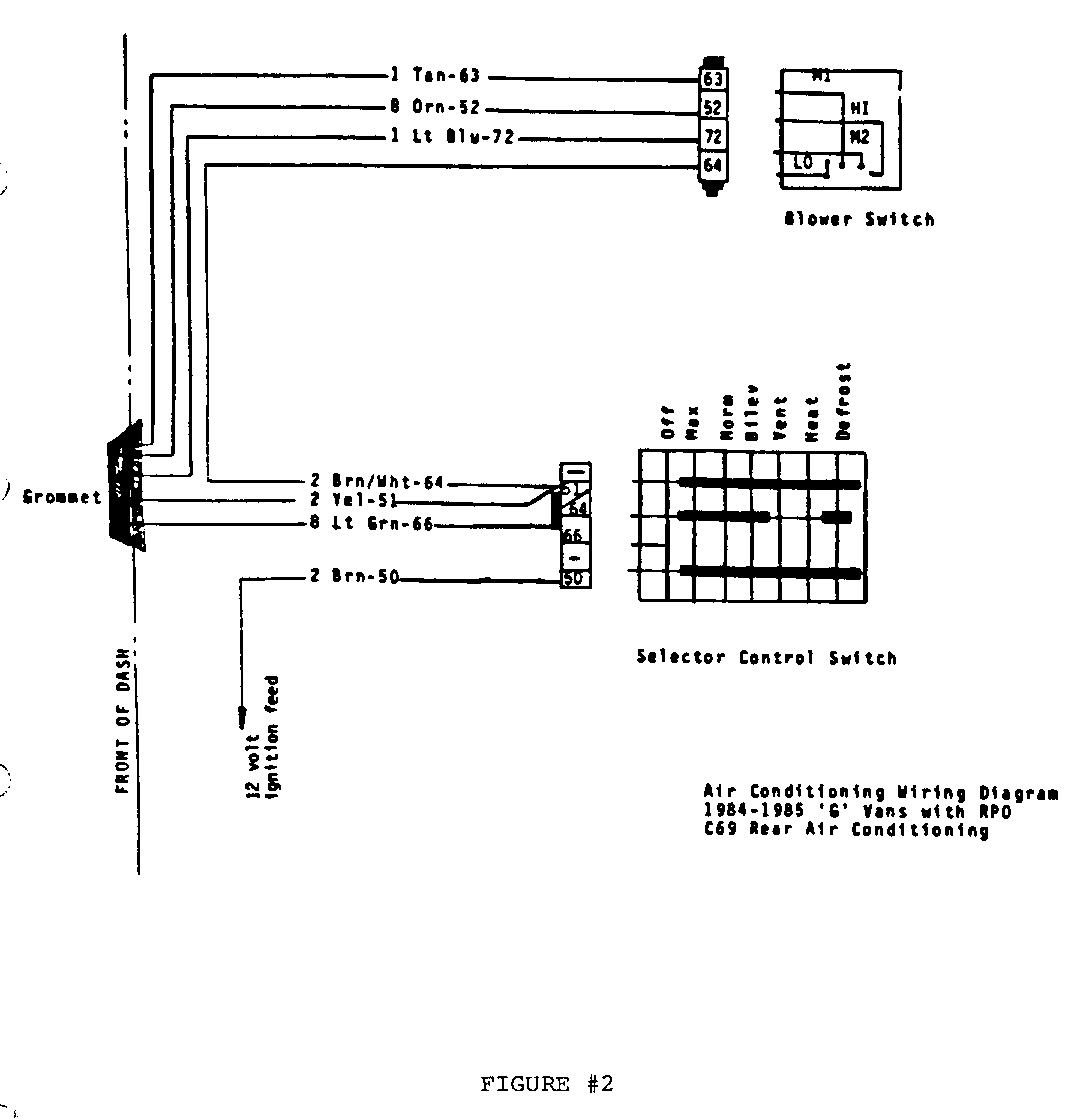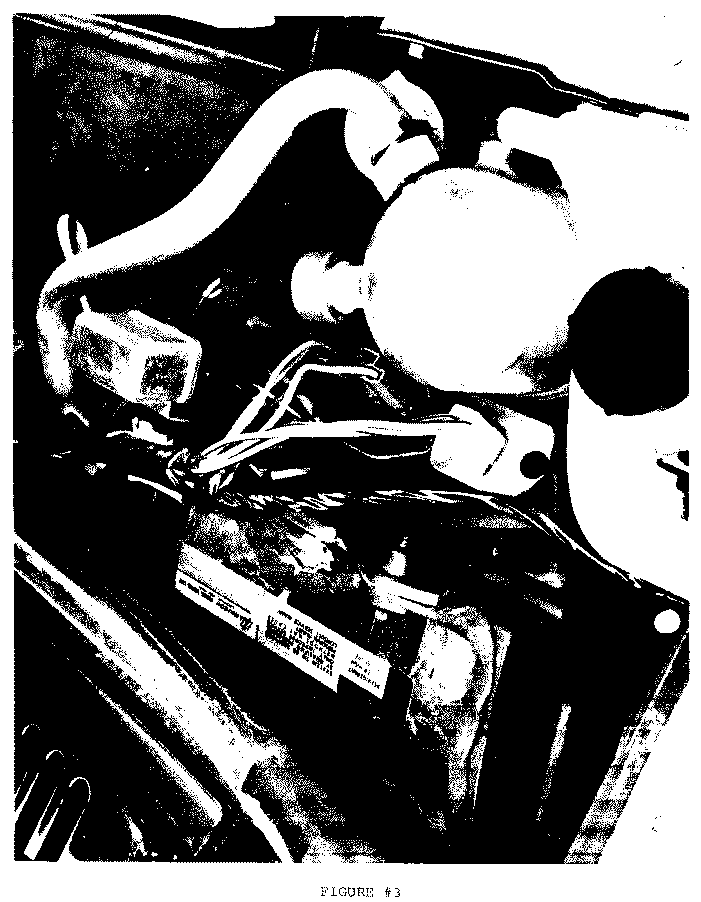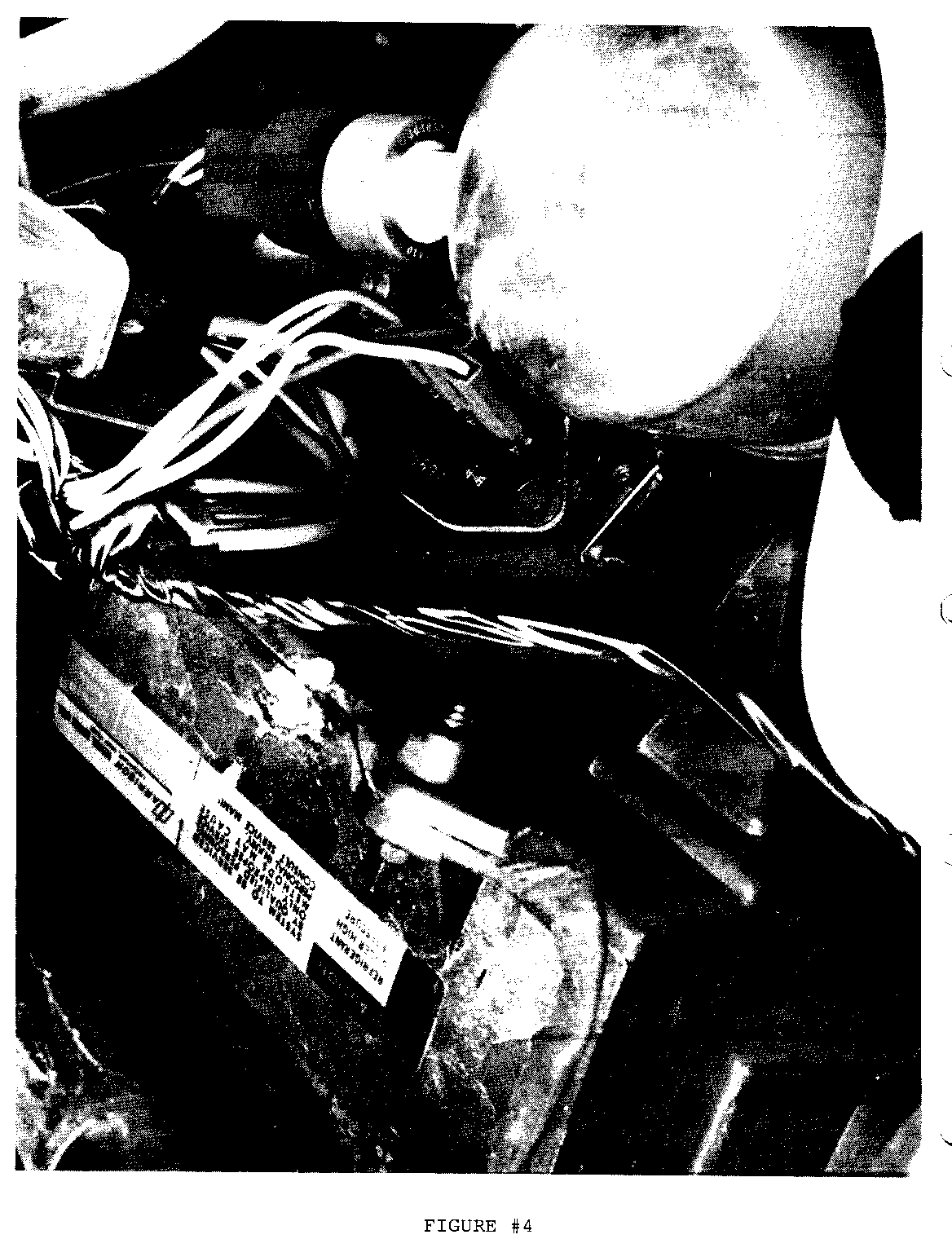FRONT HEATER & A/C BLOWER RUNS CONTINUOUSLY WITH C69 REAR A/C

1984-85 'G' VANS EQUIPPED WITH C69 REAR A/C
Some 1984 and 1985 'G' Vans equipped with C69 rear air conditioning are wired so the front heater and air conditioning blower will run continuously when the ignition switch is in the RUN position. This condition is normal, even though the heat and A/C selector switch may be in the OFF position. This is necessary to keep air flowing over the rear A/C blower control resistor coils.
Vehicles built from February, 1984, through early 1985 model production are wired in this manner.
Figure No. 1 shows the wiring diagram for these vehicles only. The wiring diagrams as published in the Light Duty Service Manuals are correct for all other 'G' Vans with rear air conditioning.
If a customer reports that the front heater and air conditioning blower runs continuously, the splice may be removed. However, the splice can only be removed if the existing A/C rear blower speed control resistor is replaced with a part number 15591188 resistor.
Follow the Service Procedure listed below.
1. With ignition key in the "off" position, disconnect negative battery cable.
2. Disconnect the three wire connector from the rear A/C system blower speed control resistor. (See Figure No. 3).
3. Remove the two resistor retaining screws from the A/C evaporator inlet case.
4. Remove the resistor from the case and discard.
5. Remove any pieces of the rear A/C system blower speed control resistor knockout plug from the opening in the case (see Figure No. 4). Should a piece of the knockout plug fall into the bottom of the case, it is not necessary to remove it.
6. Install a new resistor, P/N 15591188, in the case. Torque the two resistor retaining screws to 1.2-1.6 N.m (11-14 in. lbs.).
7. Attach the three wire connector to the resistor.
8. Remove splice shown in Figure No. 1.
9. Connect the free ends of wires 2-Yel-51, and 2-Brn-50 to the selector control switch, as shown in Figure No. 2.
10. Reconnect negative battery cable.




General Motors bulletins are intended for use by professional technicians, not a "do-it-yourselfer". They are written to inform those technicians of conditions that may occur on some vehicles, or to provide information that could assist in the proper service of a vehicle. Properly trained technicians have the equipment, tools, safety instructions and know-how to do a job properly and safely. If a condition is described, do not assume that the bulletin applies to your vehicle, or that your vehicle will have that condition. See a General Motors dealer servicing your brand of General Motors vehicle for information on whether your vehicle may benefit from the information.
